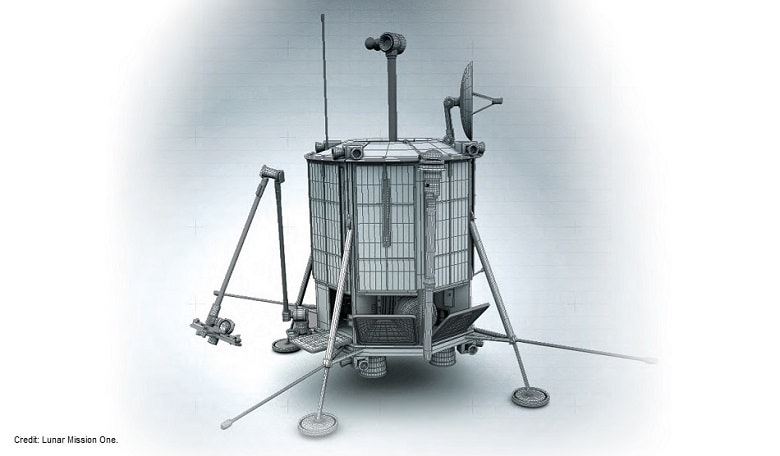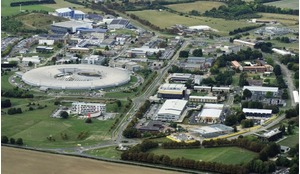Back in 2007, both the US and UK space agencies were finding that their aspirations to explore were being hindered by fiscal restraints and competing science demands. I was informally asked, as a project financier, to help find a way through it. After several months reviewing the space science and exploration scene, and working with space agencies on strategies to increase commercial investment beyond Earth orbit, I could see the difficulties with the traditional approach.
Yet it was apparent there was an untapped popular interest in space, well beyond the space sector, if only it could be accessed. One of the ideas I looked at was deep lunar drilling; it presented that opportunity. By extending the idea to encompass the addition of personal information including DNA code, a ‘billion year public archive of life on Earth’ could be created by global participation. At that moment, Lunar Mission One was born.
The Moon is, in many ways, the perfect place to store what will effectively be a set of time capsules, which could survive around a billion years.
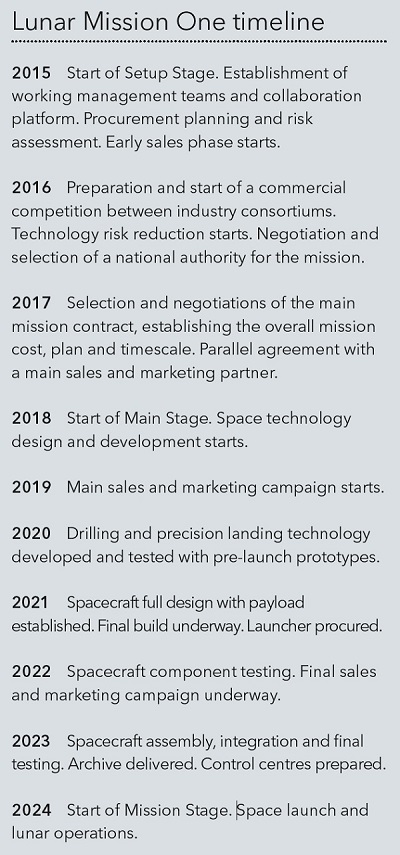
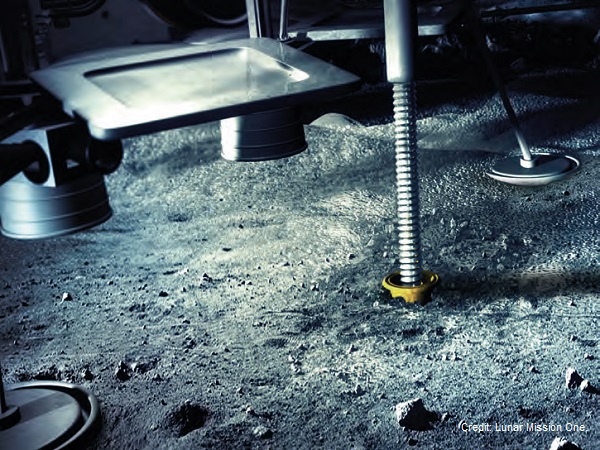 The principal aim of the mission is to drill into the lunar south pole.
The principal aim of the mission is to drill into the lunar south pole.
Years of preparation work followed, examining the cost case for the mission, developing a consumer product that would sell and conducting the market research that would provide confidence about the revenues. At this time, reward-based internet crowdfunding was beginning to hit its stride and space projects such as Planetary Resources’ Arkyd showed that websites like Kickstarter could deliver a platform not only for mass funding but also mass engagement with the public.
We decided that a global funding campaign via Kickstarter would be the method by which we would raise the funds to start the preparation stage of the project. This resulted in $1 million raised for the project in less than 28 days, acquiring a community of over 7,000 supporters from over 70 countries in the process.
When it was officially launched at the end of 2014 at the Royal Society in London, the project received plenty of media interest in both its consumer proposition and its public engagement opportunities. However, at the core of Lunar Mission One, and the reason for its conception, lies a serious scientific endeavour that will make a unique contribution to our knowledge and understanding of the origins of the Moon and the Earth.
Lunar science
The project will land on the South Pole of the Moon and drill down several times further than drilled before. It will reach a depth of at least 20 metres, and potentially as deep as 100 metres. This will enable us to access and analyse uncontaminated lunar rock up to 4.5 billion years old, shining light on some of the bigger questions in science today. Through these geological studies, we want to uncover the true relationship between Earth and its Moon and learn more about how the late heavy bombardment (that produced the craters on the Moon) shaped the history of our planet. We aim to pave the way for future lunar infrastructure, by assessing the South Pole’s suitability for a permanently manned base for space exploration. We will also investigate the suitability for astronomy from the Moon.
Space exploration has of course led to many technological developments over the decades. Lunar Mission One has ambitions with its own technological innovations such as the advanced precision landing technology required, but it is the development of the project’s remote controlled ‘wireline’ drilling that will probably have the most impact with industry here on Earth. This form of drilling has already been prototyped successfully in the USA, but to reach operational standards for our project further development work is needed. The development concerns mainly the design and material of the cutting element, known as the ‘bit’, and the remote control software that enables the operators back on Earth to visualise what is going on in real-time. The software development is very likely to lead to spin-out benefits for reducing the risks and dangers of remote drilling on Earth.
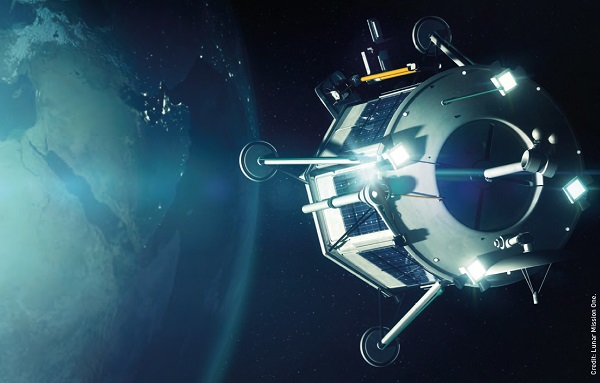 The flight to the Moon is scheduled for 2024.
The flight to the Moon is scheduled for 2024.
While much of the public support for the project has come from space enthusiasts, who engage with the scientific and technological aims, the ingredient that has given Lunar Mission One such a broad appeal is the archive we intend to place into the borehole, once drilling is completed. The Moon is, in many ways, the perfect place to store what will effectively be a set of time capsules, which could survive around a billion years. The extreme cold, the lack of moisture or gases, the vacuum and the fact that the archive will be buried below tens of meters of rock mean that it will not require ongoing servicing or maintenance.
Lunar archive
Each new supporter we earn adds to our momentum. Each step forward wins over a previous sceptic. Each milestone reached reduces risk.
The archive will be formed of two parts: the public archive, which will contain a publicly assembled and authoritative digital record of life on Earth; and the private archive, where individuals will pay to include information about themselves. The former is a huge undertaking that will require a truly global database, collecting information from across the world. Our motivation behind the public archive is as much in its creation – its ability to generate mass public participation for education and research – as in its finalised content. The latter, the private archive, presents the consumer proposition for funding the entire project.
People will be able to purchase a ‘digital memory box’, their own digital space, into which they can upload anything from a simple message to music, photos or even video content. The cost of the product will depend on how much digital information the consumer wishes to store. However, as we had forecast, the most valuable aspect of the private archive is the ability to include DNA code, captured and stored at very low cost as a single strand of hair.
This is a unique product that we are confident, given our due diligence, will deliver the revenues required to fund the project. We have already seen that, even in the absence of a formal marketing campaign, people are drawn towards the notion of reserving their own ‘place in space’. It is intrinsically human to imagine our own future, and indeed that of our planet. Many people embrace the idea of having a part of themselves live on after they are gone, and it is a wonderful thing to imagine the archive’s discovery long into the future.
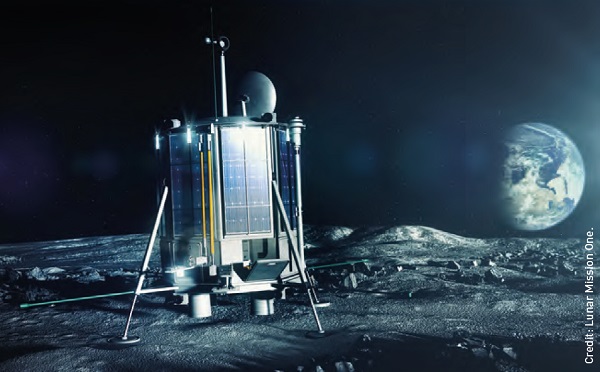 After safely landing, the science and archive phases of the mission can begin in earnest.
After safely landing, the science and archive phases of the mission can begin in earnest.
The market research exercise we conducted in 2012 investigated the underlying motivators and barriers to purchasing the product, and analysed responses from 6,000 individuals. It predicted $4.5Bn global revenues, half from the USA, estimating that 1% of those who could afford the core product would buy it.
Lunar business
Lunar Mission One’s business case is undeniably fundamental to the existence of our project; it simply needs to be given the ambition and scale. The technology feasibility study that was undertaken in 2012 at the Rutherford Appleton Laboratory in Harwell forecast a mission cost of $750 million, and we expect the public engagement element of the project to cost a similar amount over the 10 year period between now and the mission’s launch. We will be looking to ensure that the public engagement creates a positive feedback, raising the profile of Lunar Mission One and encouraging people to participate by purchasing space in the private archive.
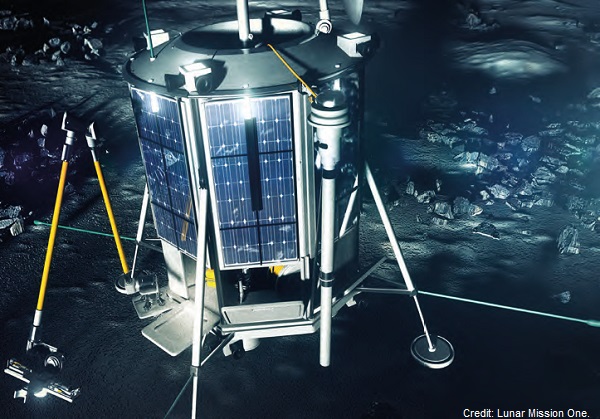 Drilling down into the Moon by at least 20 metres will allow unprecedented scientific investigations.
Drilling down into the Moon by at least 20 metres will allow unprecedented scientific investigations.
With this is in mind, public engagement is and will continue to be an integral element of the project. But it goes further than simply raising the profile of the consumer offer. As far back as 2008, when the idea of Lunar Mission One was first being discussed, the promotion of science, technology, engineering and mathematics (STEM) education was seen as a must for the project. Both the project’s content and scale gives supporters genuine opportunity to contribute meaningfully. The assembly of the public archive will involve schools, universities, community groups and people working individually.
This will run alongside our global education programme, a charitable endeavour led by the UCL Institute of Education, which aims to promote knowledge and inspire learners of all ages the world over. STEM education can lead this, but unusually for a space exploration project our public archive will lead to a large measure of understanding our planet. This includes the biological and environmental sciences, and the arts and humanities of human civilisation. The range of subjects that can be taught under the umbrella of Lunar Mission One is practically without bounds.
We are also looking to tap into the concept of crowdsourcing ideas. A platform is currently being developed on our website that will allow supporters to work individually or as a group to contribute their ideas and work on the project. Inspired by unconventional ventures such as the MIT Management School’s ‘We Are Smarter than Me’, our Lunar Missions Labs will encourage creative online workshops where anyone, anywhere in the world, will be able to collaborate with others to solve real life challenges of the project.
As with all fledgling space exploration projects, we are very much standing at the starting line, focusing all our energies on getting down the track. We have every reason to be optimistic, especially given the success of the Kickstarter campaign, but there are 10 years of work ahead that require careful planning and execution (see box).
We are aided in the fact that we already have clear objectives and several key milestones, which sit within the three principal stages. First we will deliver the Setup Stage in which the main contracts for the mission and for sales and marketing are put out to tender and agreed. Lasting about three years, this stage is funded by early sales that reserve digital memory boxes and is supported by management sponsors. Next will come the Main Development Stage, which will last about six years and see the rollout of the main sales and marketing campaign that will fund this stage, the technology developed, the mission payload established and the spacecraft built. Around 2024 we will see the start of the Mission Stage, when the space mission will be launched.
Over the next three years we will be looking to appoint a lead space agency to act as the contracting authority for the project and to provide the legal powers for the space mission. The agency would itself have the authorisation of the Lunar Missions Trust, the body overseeing the governance of the Lunar Mission One project. We will also be engaging with the aerospace industry and inviting companies to bid for the opportunity to manage the actual mission by assembling an international consortium, all under contract to the space agency. The marketing and sales supplier will also be under contract to the agency, and will be expected to franchise its local promotion and sales to regional operations around the world. In return for its services this supplier will take a proportion of all revenues raised and pass the remainder to the agency, who will in turn pay the mission supplier. The revenues would be underwritten separately.
Lunar pioneering
Lunar Mission One is without doubt pioneering a new method of financing space exploration, a new strategy of working with industry and a new way of engaging with the public. Increasingly I get people asking me what I think the consequences will be for industry if Lunar Mission One succeeds.
Firstly, I set up the Lunar Missions Trust to take control of all the surplus funds at the end of the project, and to use them to support future space science and exploration. Although the objectives of an exploration mission may be scientific, in practice most money is spent by industry. That is no surprise. Throughout history, the greatest component of the cost of exploration has been its logistics – getting the explorers or their science to where they can explore. Lunar Mission One would add to the mix of the space industry’s funding sources, expanding its market.
Secondly, I expect Lunar Mission One to be part of an increasing interest in STEM subjects, only it will be more international than other projects, and draw on a wider range of skills. Staffing shortfalls, and replacing an aging workforce with youth, are continuing challenges for the sector and the economic benefits it creates.
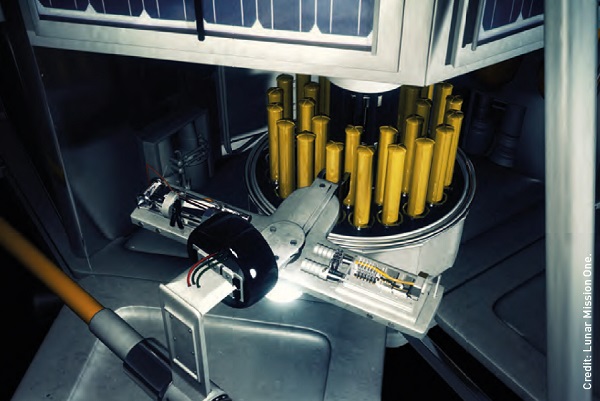 The time capsules that the team plan to bury in the bore hole made by the drilling could survive for a billion years.
The time capsules that the team plan to bury in the bore hole made by the drilling could survive for a billion years.
Thirdly, the structure of the sector. The New Space movement is seeing an evolution of roles between government, industry, universities and other R&D establishments, and not least the public themselves. Each has objectives to meet and resources to apply. Government has authority, resources and political power. Industry has the engineering capability to deliver, plus a supply of investment capital limited only by the risk of financial return. Academia has new scientific and technical ideas. Commerce has business ideas, for both other business (B2B) and consumers (B2C). And the public? Well, they are the ultimate resource, and any project that engages them will benefit by the extent of that engagement.
Like others, I see Government continuing to lead the more risky but pioneering exploration missions. Industry follows when the business cases mature. Going from one to the other will inevitably involve forms of public private partnership. Freeing up roles will lead to more people finding more solutions.
Fourthly, there is internationalisation. We read and hear much about the need to collaborate, but despite examples such as the International Space Station I see an inbuilt reluctance to share in projects. It seems universal, amongst officials, businessmen and academics – and even the population who are far more motivated when a project is ‘one of ours’. Lunar Mission One is a new opportunity for reaching out beyond traditional boundaries, not least for its industrial deliverables. Time will tell what the impact will be.
…we are currently experiencing the most exciting period for space since Apollo.
Each new supporter we earn adds to our momentum. Each step forward wins over a previous sceptic. Each milestone reached reduces risk. Lunar Mission One is at the start of a long journey of course, but we are quickly building a sound reputation as a well-founded and credible project.
They say that necessity is the mother of invention – needless to say, our industry is no stranger to this reasoning. For decades now we have looked to push the boundaries of what is possible in order to meet our ambitions. Lunar Mission One is the latest addition to a growing number of remarkable ventures in the space sector today. It seems, in my mind at least, that we are currently experiencing the most exciting period for space since Apollo.





